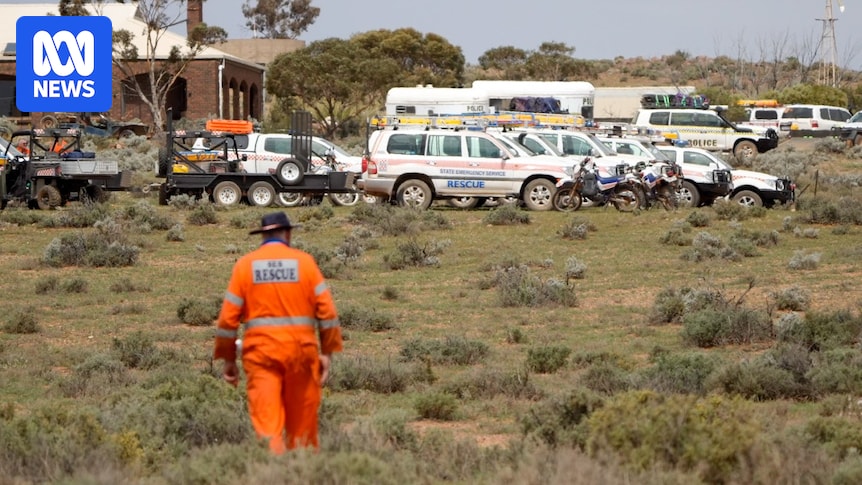An expert in the ethics of artificial intelligence says a fake image of missing four-year-old Gus being kidnapped in South Australia’s outback is concerning, but not surprising.
Gus was last seen playing at his family’s homestead, south of Yunta, in the state’s mid-north at about 5pm on Saturday, September 27.
Last week, SA Police scaled back the search but have since revealed drone searches were conducted over the weekend, with results expected to be several weeks away.
They also confirmed earlier this week that a boot print found by a dam, separate to one found earlier, was not related to Gus.
In recent days, a post has circulated on Facebook with an AI-generated image of a boy, with long blonde curly hair, being held by a man getting into a four-wheel drive.
The image, which the ABC has chosen not to publish, is accompanied by the text, “Is this a kidnapping case?”
It also includes the only publicly released image of Gus.
The extensive search in the vast terrain near Yunta was scaled back on Friday. (ABC News: Daniel Taylor)
Previously, Facebook’s AI searches have detailed incorrect information about the search for the missing boy.
Rebecca Johnson, an expert in AI ethics at the University of Sydney, said AI-generated images could be created by “nefarious people” looking to enhance followers or create clickbait.
“[People] can take advantage of this situation, and this void of independent fact checking, to gather people that are under stress,” she said.
“The public are under stress that this little boy could be taken, and [they] use that stress to drag them down into different rabbit holes of misinformation.”
Ms Johnson said the issue had become heightened as people now engaged with less traditional media.
“In this situation the real problem comes when a lot of people abandoned legacy media … and start to completely, or almost completely, receive all of their news through these jumbled social media sites,” she said.
Public advised to assess origin of information
She said to combat the issue, people needed to assess where the information they consumed came from.
“We see a lot of people using [AI-search tools] instead of Google search or instead of going to legacy media … without understanding that these are just generative tools,” she said.
“That stuff they’re dragging from the internet might be misinformation itself, and so what we really should be focusing on is teaching people how to do real research.”
This week, Google launched a chatbot-like advanced form of AI search in Australia, called “AI Mode”, which embeds the switch from “search engine” to “answer engine”.
South Australia’s Assistant Minister for AI Michael Brown said the misinformation being spread about Gus showed the importance of people understanding the technology.
“That way, we can make sure that we use AI responsibly, and we use AI in a way that will enable us to be more productive, but we’re also aware of the limitations of AI and the possible downsides of AI,” he said.
The boy was last seen by his grandmother playing at his family’s homestead in South Australia’s mid north. (ABC News: Daniel Taylor)
South Australia’s Commissioner for Victims’ Rights, Sarah Quick, said AI was added an extra layer of trauma for the families of victims.
“It’s an extremely cruel act that has very real consequences for Gus’s family, the community, police and those involved in the search for Gus,” she said.
Ms Quick said it would become a growing issue.
“I’m certain it is something that will become more prolific unfortunately,” she said,
“We now have to consider the additional harm that it is causing people.”
Sarah Quick says AI generated images add an extra layer of trauma for the families of victims. (ABC News: Che Chorley)
In a statement, a SA Police spokesperson said images of missing persons were “released to help police find [them] as fast as possible”.
“SAPOL releases images of missing persons after gaining permission from the family or guardian of the person,” they said.
“Members of the public should only trust reputable sources like government agencies where images are published online.”

